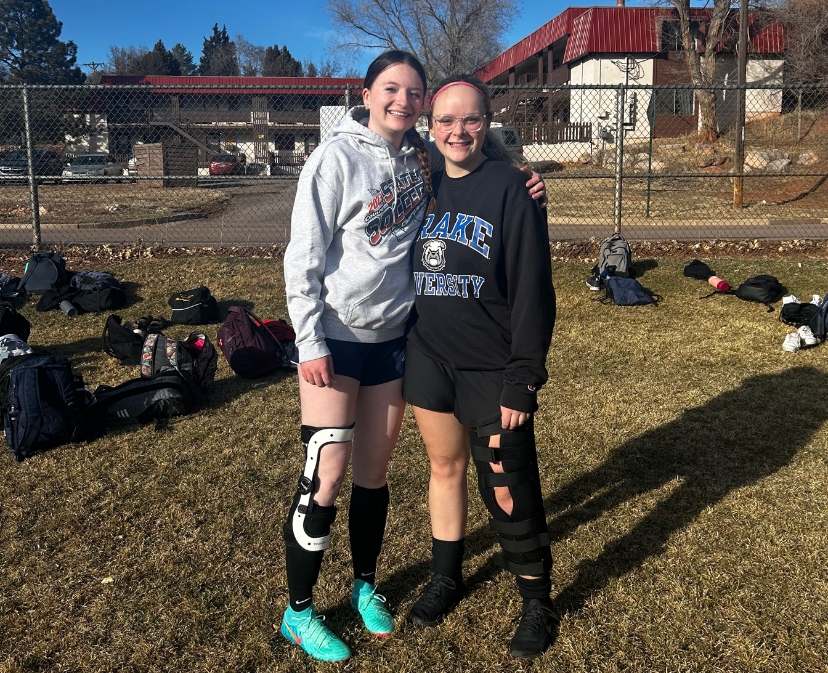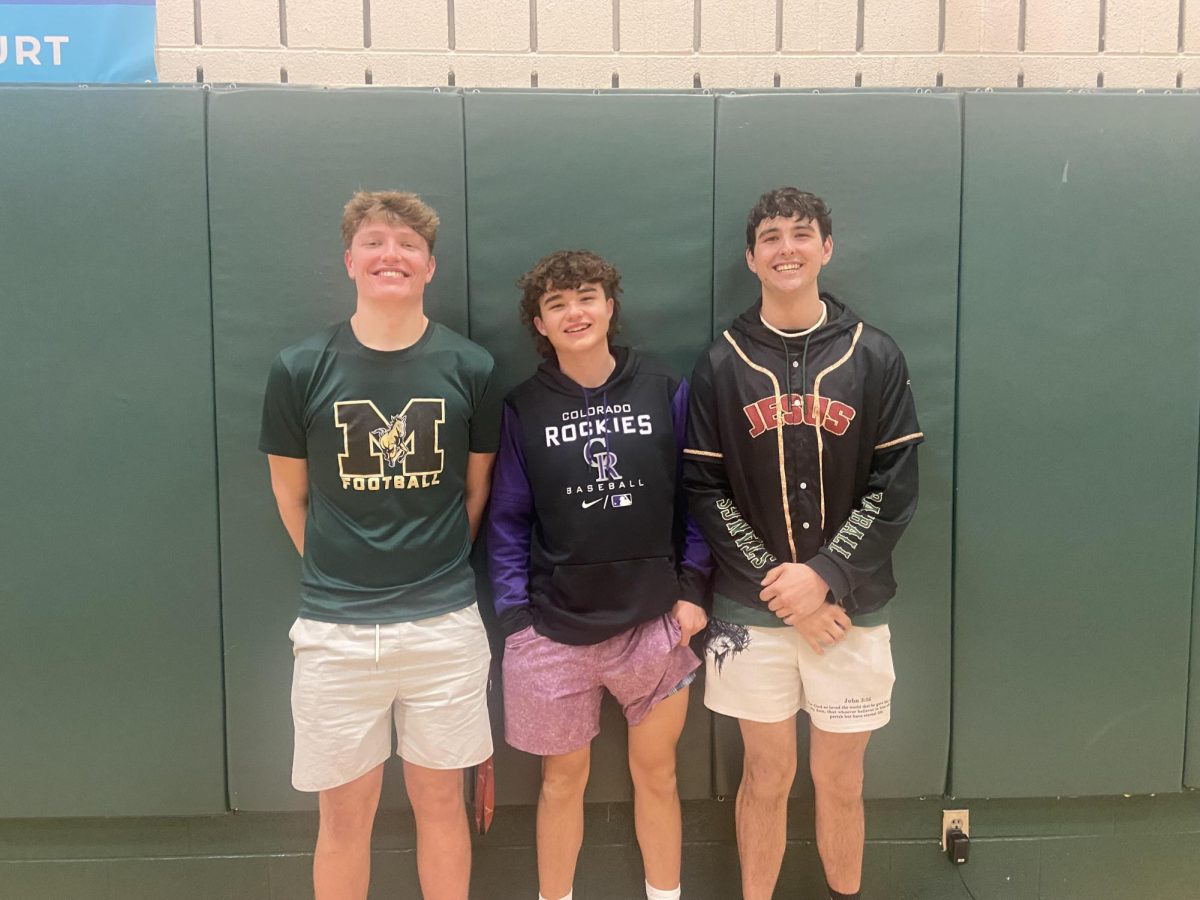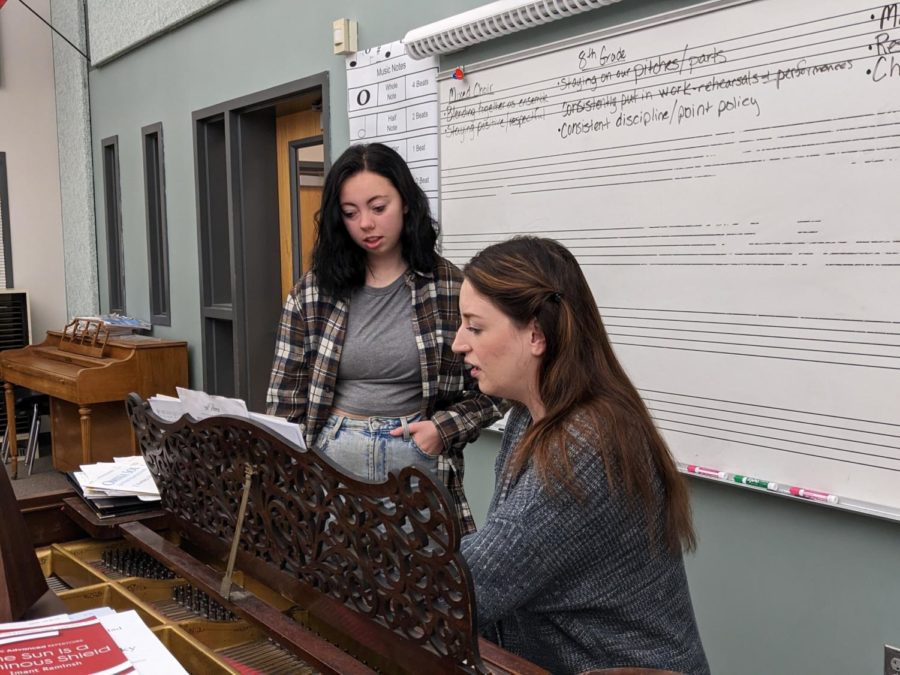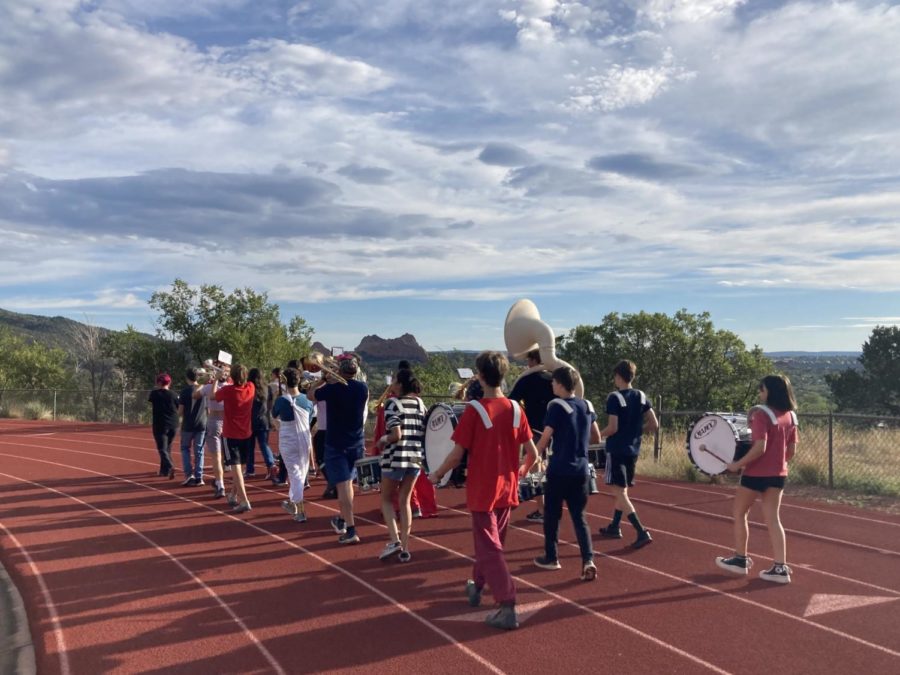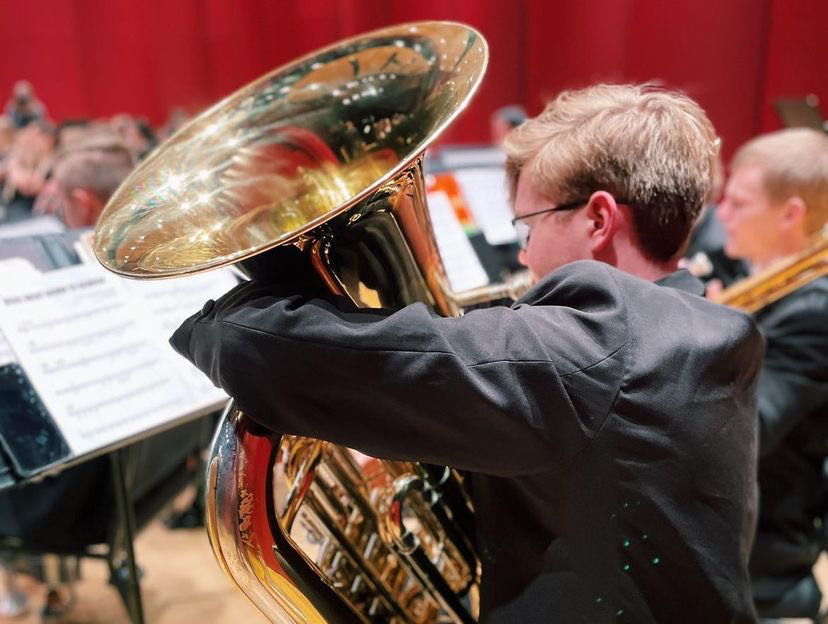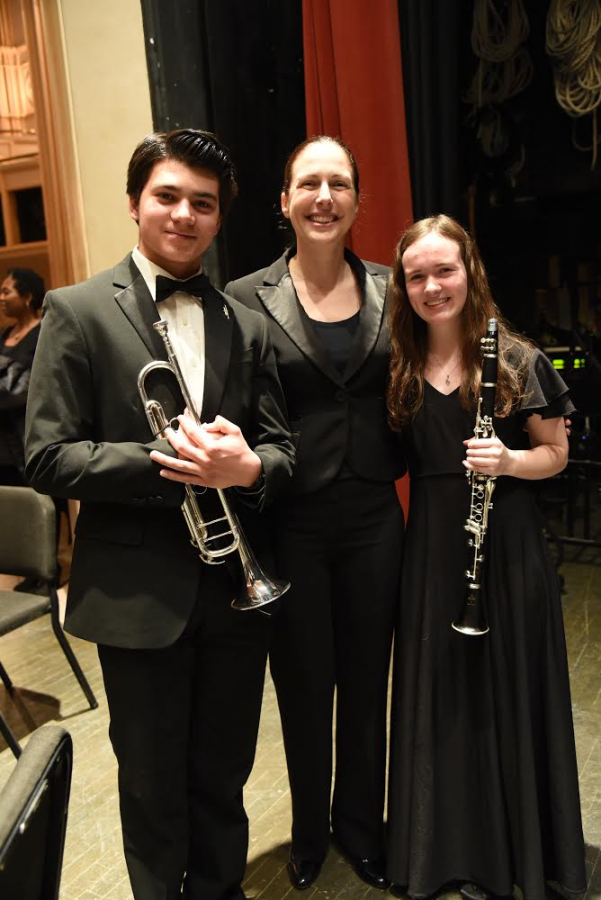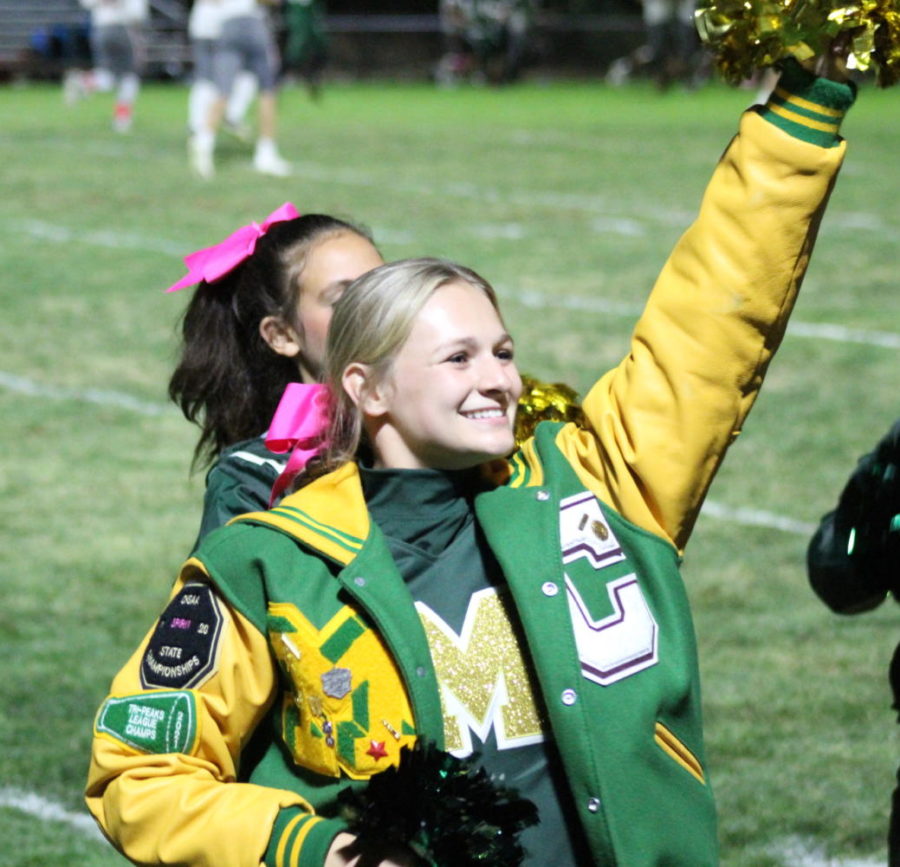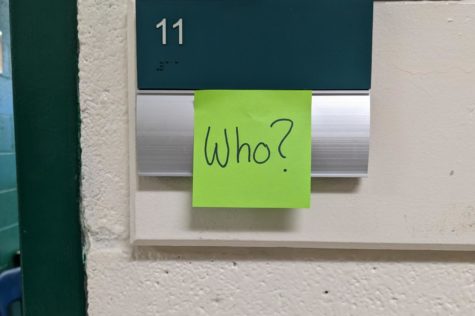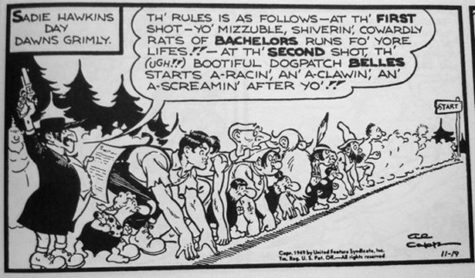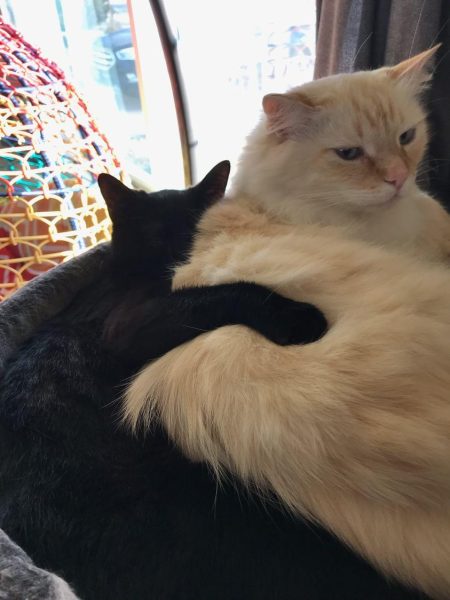Quitting is the new normal and not just in cheerleading
Cheer captain, Weatherly Hall (12), leads the cheer team at during the Homecoming football game.
December 1, 2021
Cheerleaders at Manitou Springs High School take on one of the most time-consuming schedules: practices every morning, tumbling every Thursday night, football games, basketball games, and competitions. Each cheerleader has to have a strong physical and mental game to participate in this sport. Not everyone can handle the countless early mornings and late nights spent on cheer. It is here that we see why “MSHS cheer is down 10 members from last year”. This “quitting mentality” has become prominent in the team.
Cheerleaders and cheerleading are misrepresented constantly.
Do you even do anything at cheer practice? All they do is wave their pom-poms and dance around. Cheerleading is not a sport.
The stigma around cheerleading has spilled out from movie scenes and into the walls of high schools throughout the country, characterizing cheerleaders as egotistical, unathletic and dumb.
Do you even do anything at cheer practice?
Practice begins at 6:00 a.m. sharp. Roll out the mats and begin warm-ups. Sprints for every minute my teammates are late. Jumps first, then stunting. Arm, ab, and leg workouts end the practice. Throwing girls into the air before the sun has come up takes a decent amount of commitment. A 50 cent coffee from the cafeteria’s breakfast line usually gets me through the day.
All they do is wave their pom-poms and dance around.
As a school spirit leader, I must jump until my feet are sore and hold a smile for the duration of each football game. My team practices countless mornings in hopes of getting even just a glance from the student section. Our failures and falls elicit a stronger response than a perfectly executed stunt.
Cheerleading is not a sport.
This statement is arguably the most impactful on the stigma of cheerleading. Not only do I hear this in my small-town high school, but social media posts broadcast throughout the United States. It is defeating listening to the football players make jokes about our role in the school, unaware of the time and effort my team puts forth.
It is so easy to stop waking up for practice and so hard to overcome the challenges and push yourself to work harder. It is easy to blame everything and everyone and hard to admit to yourself that the work was too much.
Quitting has become normalized in our small cheer team but also in other sports, clubs and even the classrooms here at Manitou Springs High School. The 2020 school year ended in uncertainty. There is not a single student in the United States that did not experience the impacts of COVID-19.
No one has forgotten the hardships we went through, doing our homework as we watched our teachers and peers through a screen. Entering into our current school year, we see the changes that have taken place. There are no cohorts, everyone is in the building together, and we have had semi-normal events like assemblies and homecoming dances.
Despite the transition back to normalcy, the “quitting mentality” has remained. There have been numerous athletes here at Manitou who have decided that their sport was “too much”, including volleyball and boys’ and girls’ basketball. There have been students who have decided that their clubs take more than just showing up to meetings, and therefore quit.
Most importantly, however, there has been a number (way too high) of students failing classes, simply because they have quit. They cannot find the motivation to turn in a single assignment, and have decided that quitting is acceptable as it was in quarantine many months ago.
It has become the norm to decide not to do an assignment or not study for a test simply because students don’t want to. Teachers noticed the lack of motivation, especially in the younger classes as they entered high school during the pandemic. Knowing that high schoolers have no desire to put in the work for a class or a sport, what does this mean for our future generations moving forward?











